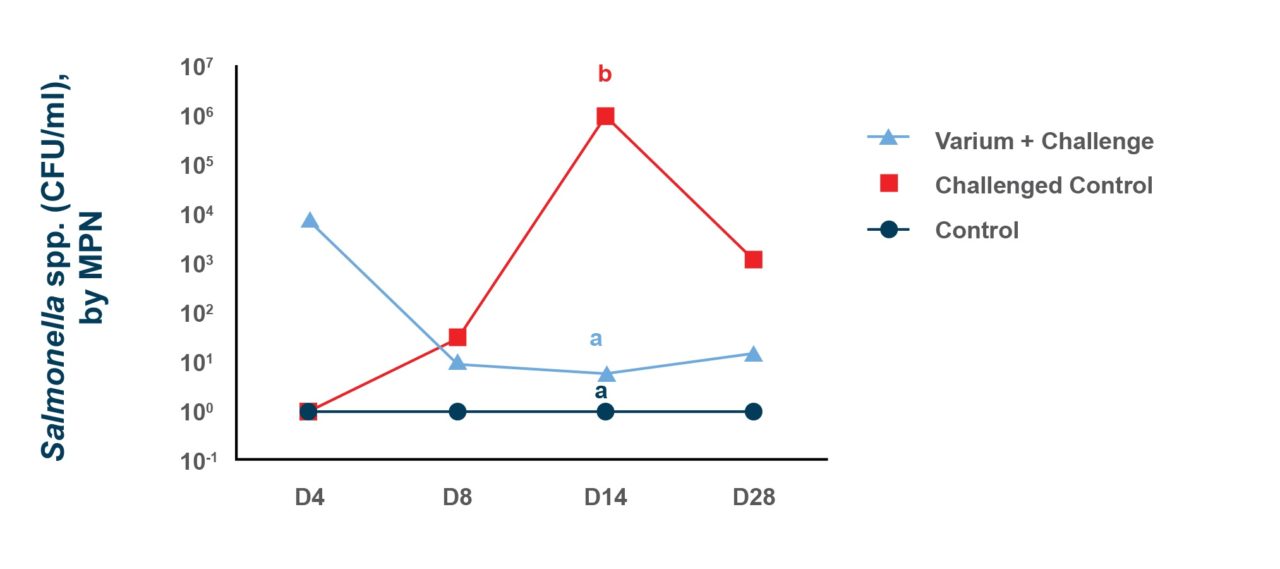Salmonella is one of the most prevalent foodborne zoonotic pathogens worldwide. However, by using strategies that reduce the contamination of poultry products at the farm and processing plant levels, poultry producers and processors can play an important role in reducing the incidence of salmonellosis and the emergence of antimicrobial-resistant Salmonella strains.
Poultry-Related Salmonellosis
Salmonellosis is a common human foodborne illness and one of four key global causes of diarrheal diseases in people according to the World Health Organization. Poultry-related salmonellosis is typically caused by Salmonella spp. passing from poultry to people through contaminated eggs and meat. Poultry are often asymptomatic carriers, and their intestinal tracts serve as pathogen reservoirs, potentially leading to contamination of food products.
Salmonella Transmission
To enter the human food chain, Salmonella must first colonize the bird’s intestinal tract. After colonization, Salmonella can spread via horizontal transmission (bird to bird), contaminating the environment and the carcass during slaughter. Salmonella colonization of the cecum can also result in vertical transmission (parent to progeny) through contamination of the yolk, albumen and eggshell membranes.
Reducing Salmonella Contamination
Salmonella can contaminate meat products during processing, causing contaminated poultry carcasses to serve as a source of infection in consumers. Innovative technology provides processors with methods to reduce contamination at the poultry plant; however, control of Salmonella at the farm level is also an important step in reducing the risk of salmonellosis in people.
Antimicrobial-Resistant Salmonella Strains
Antimicrobial-resistant pathogens, which include strains of Salmonella, are a major concern for public health care worldwide. The U.S. Centers for Disease Control and Prevention (CDC) reported that over a three-year period, an average of 16% of all nontyphoidal Salmonella were resistant to at least one essential antibiotic.
The concern over antimicrobial resistance (in all pathogens, not just Salmonella) has led to a global effort to reduce the use of in-feed antibiotics in poultry production in an effort to slow the emergence of antimicrobial-resistant pathogens. This presents a challenge for poultry producers since they are still being urged to control Salmonella in the poultry barn to reduce contamination of meat during processing.
Reduce Salmonella with a Non-Pharmaceutical Solution
A natural feed additive that producers can use to help limit Salmonella in poultry is Varium® — a patented mineral-based product sold in Amlan’s international markets. Varium enhances multiple aspects of the intestinal environment, creating production results consistent with those observed with antibiotic growth promoter use. The patented technology in Varium includes a synergistic formulation of three ingredients with distinct modes of action: Varium reduces levels of pathogenic bacteria and their toxins in the intestinal lumen, acts as an enterocyte energy source, and stimulates the intestinal immune system to help birds naturally defend against pathogens.
Varium has been shown to agglutinate (adsorb) Salmonella spp., which can help prevent colonization of the intestinal wall and subsequent proliferation (Figure 1).


Supporting the in vitro agglutination results, Varium also reduced Salmonella colonization in vivo in a 28-day broiler trial conducted at Imunova Análises Biológicas (Curitiba, Brazil). In this study, broilers challenged with Salmonella enterica serovar Enteritidis and supplemented with Varium had a 5-log reduction in cecal Salmonella levels on day 14, compared to the challenged control, and reduced overall Salmonella levels (Figure 2).

Salmonellosis and antimicrobial-resistant Salmonella strains are important global public health concerns. However, with the assistance of natural mineral-based feed additives like Varium, poultry producers can help reduce the Salmonella risks for consumers at the farming stage. To learn more about Varium, click here.

